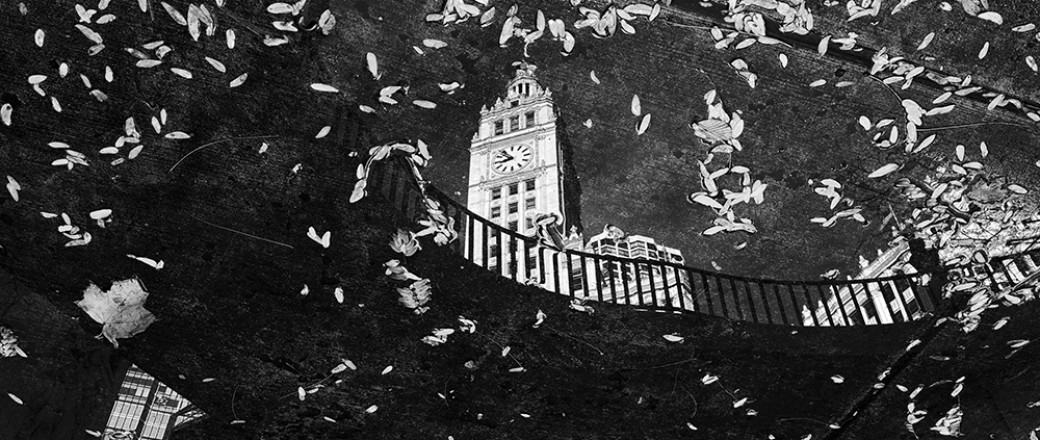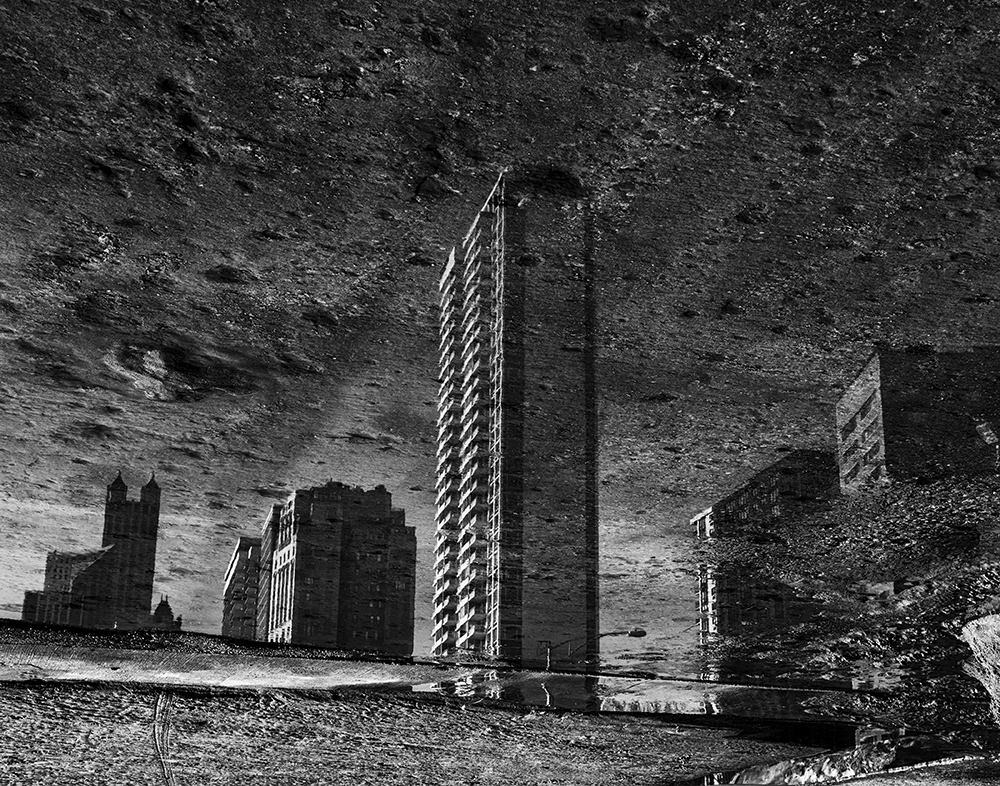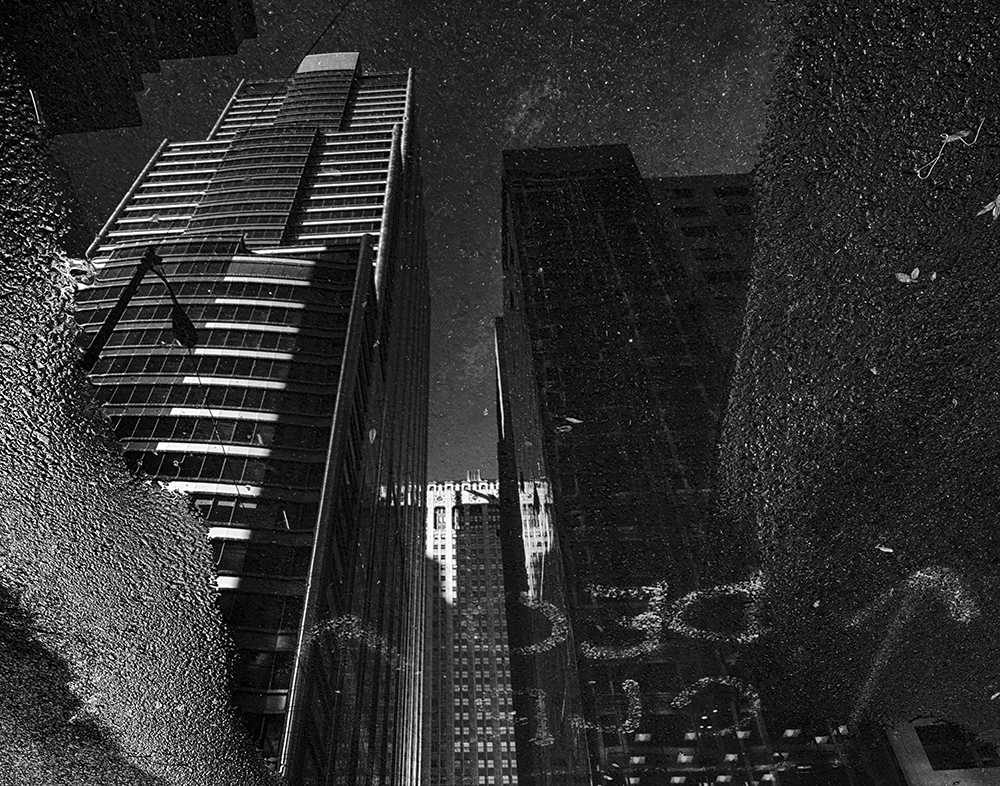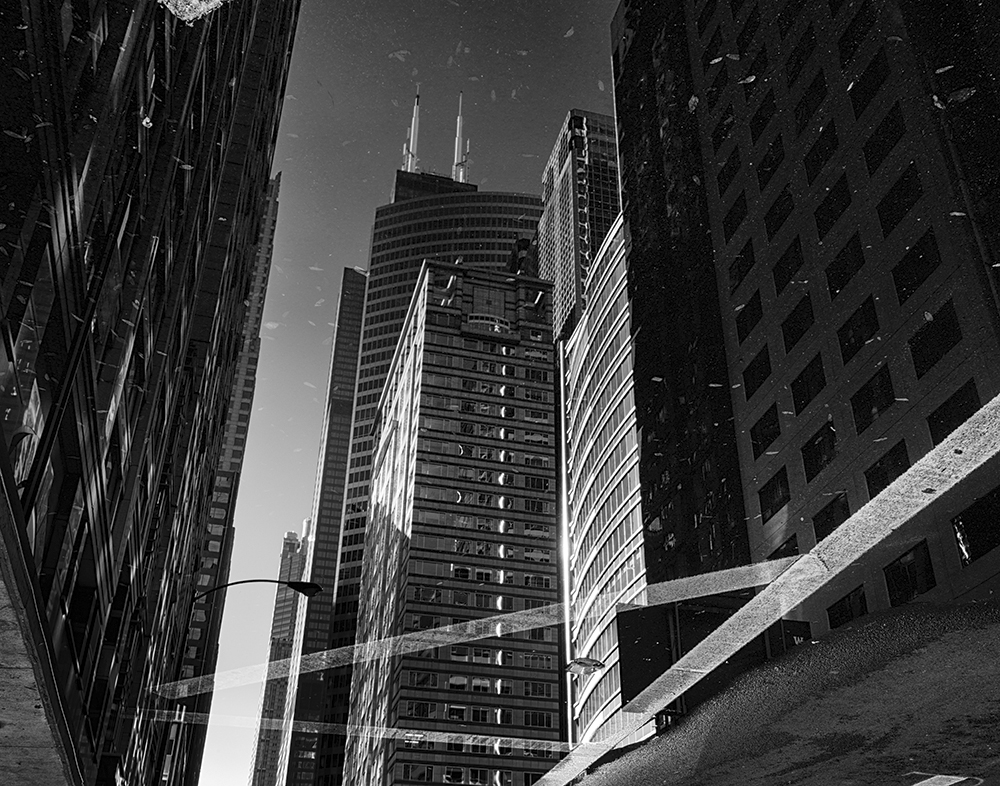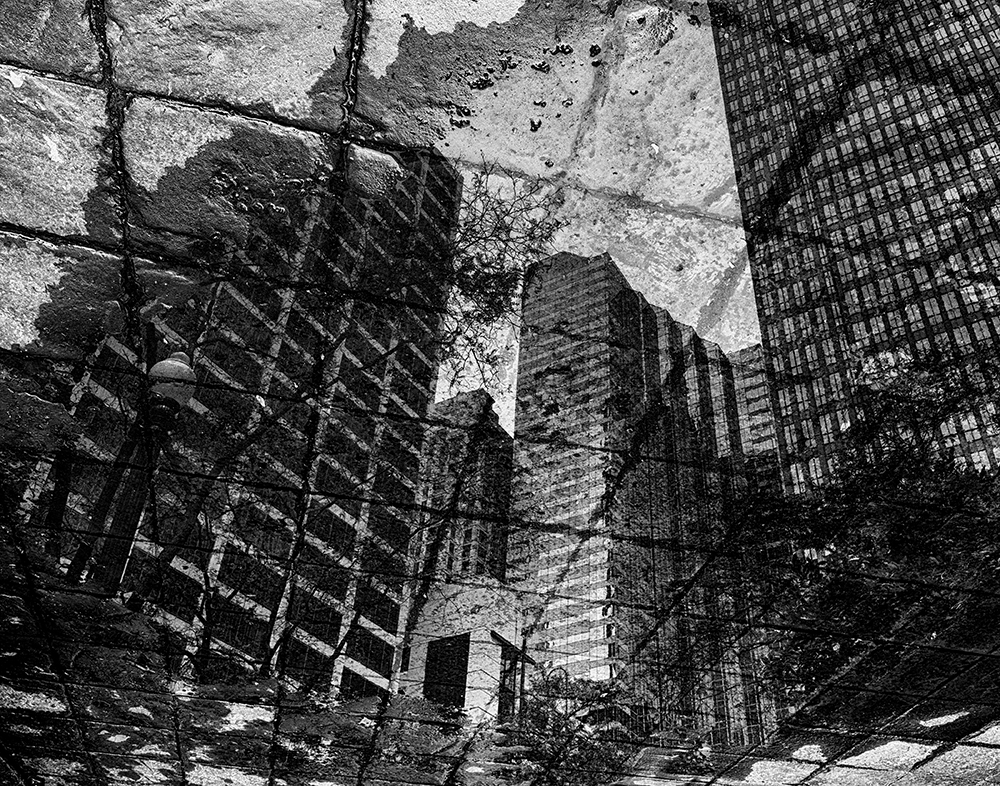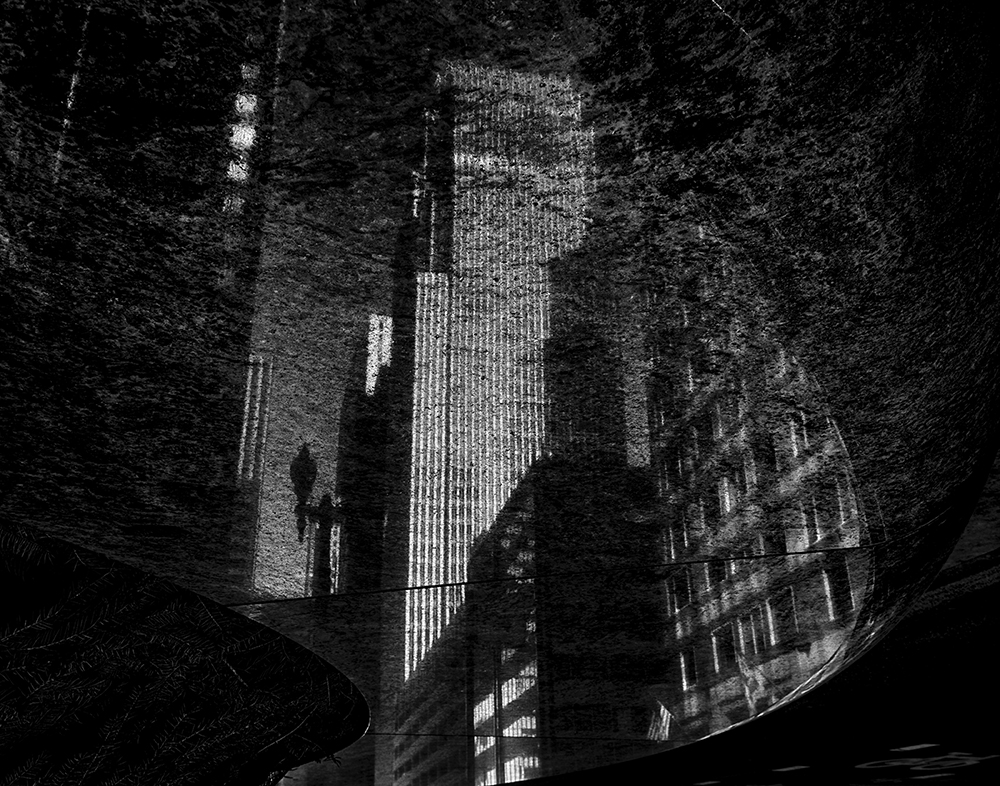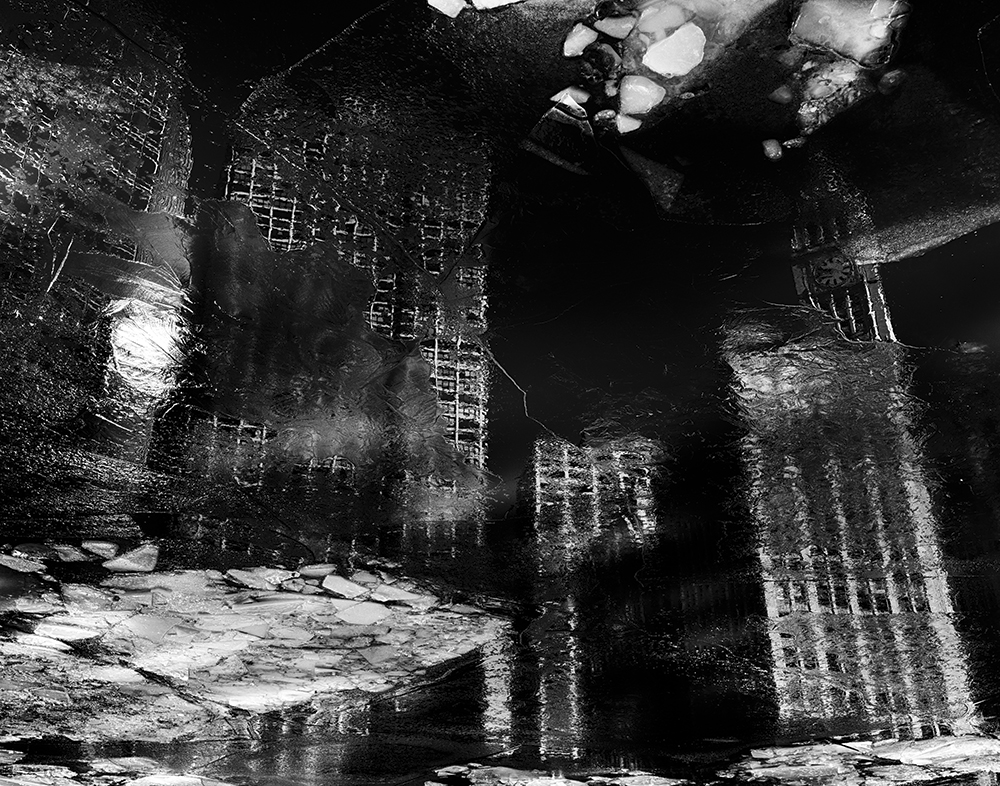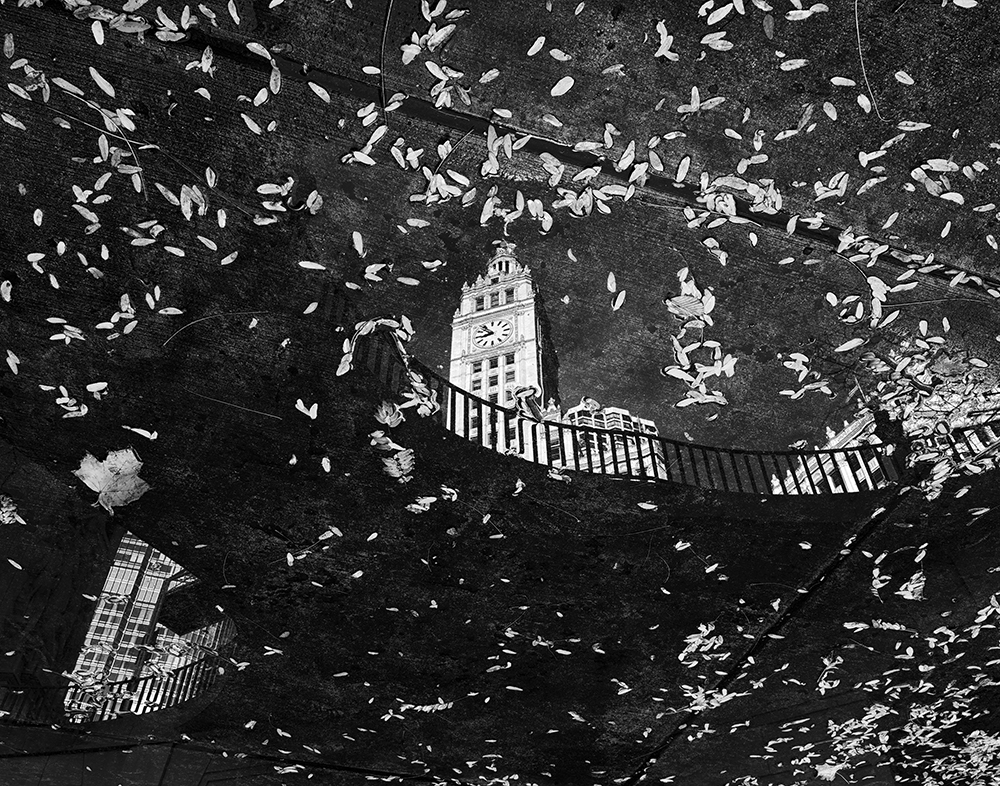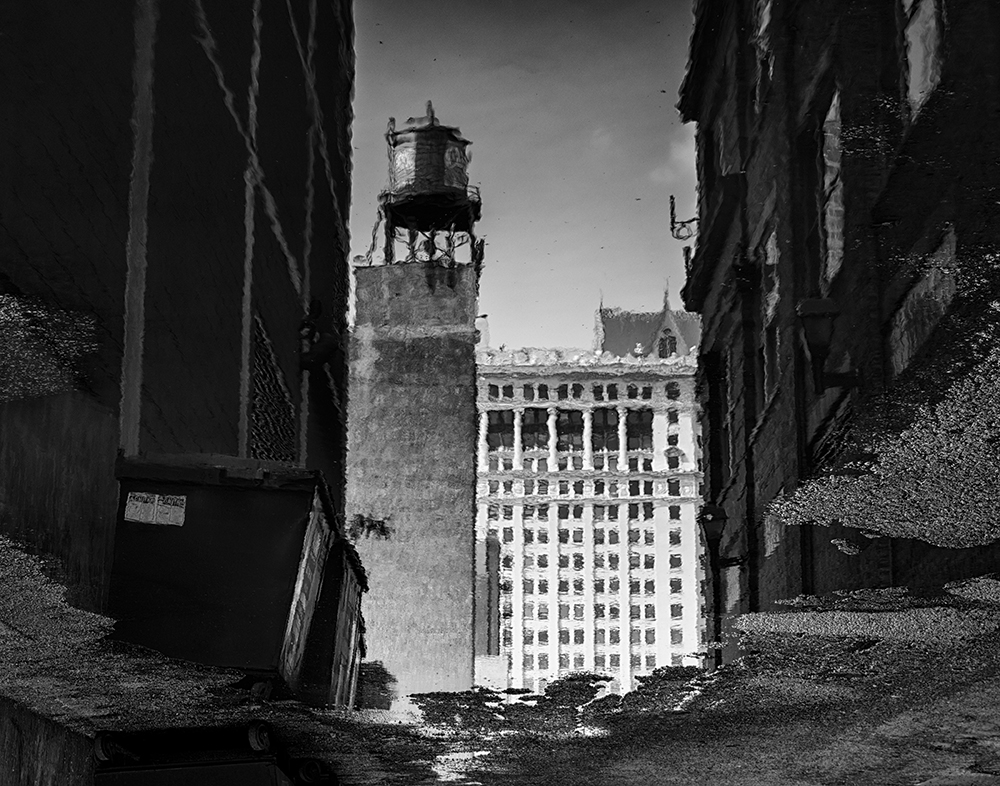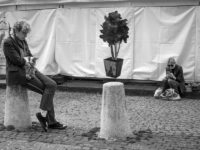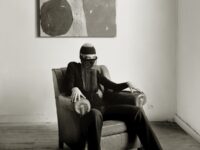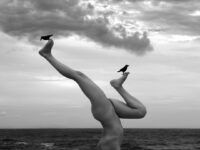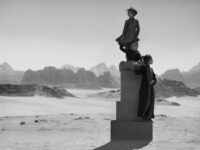In early 2014 I began to photograph Chicago cityscapes reflected in various shiny surfaces. I thought of Lewis Carol’s famous children’s book “Alice through the Looking Glass,” and to get a little inspiration I decided to reread his wonderful text. On the other side of the looking glass, Alice finds a world that is familiar and yet not quite right. After reading a poem in that strange world, she notes: `Somehow it seems to fill my head with ideas — only I don’t exactly know what they are!’ Lewis Carol was pointing out that seeing something we don’t quite understand gets us thinking.
In Chicago through the Looking Glass the city’s famous architecture is reflected in various horizontal surfaces: full and empty pools, puddles, and fountains, wet pavement, shiny marble benches, and frozen river ice. The images are flipped vertically, transporting them into the looking glass world in which down-to-earth things – the pavement, fallen leaves, items of litter – become objects of fantasy floating mysteriously across the image. The result is something that looks real, and yet not quite right. Something we don’t fully understand, which gets us thinking.
How and when did you become interested in photography?
For several years I made holiday journals with my wife, sticking the best shots into a fancy album and adding text from a vacation notebook. I’m glad we did that. They are precious memories. Then came the digital revolution, and along with it stock photography and a way to get feedback. My technique improved and my photos sold. I was hooked. That was a decade ago. My first big project was to photograph every one of the 77 community areas that make up metropolitan Chicago. It took me seven years. At the end of it, I knew the city, its architecture, and its story. It’s a story I’m still exploring photographically.
Is there any artist/photographer who inspired your art?
My heroes are those nineteenth century photographers that carted a wagon-load of equipment to some remote spot, and then waited hours, and sometimes days, for the light to be right. I have their photographs hanging on my walls. They are beautiful things that invite us to dream about distant places and far off times. The technical and artistic mastery of the best of these nineteenth century photographers is unsurpassed, but most of all, it’s the way their photographs get me thinking that I find inspiring.
Why do you work in black and white rather than colour?
I try to provoke the imagination (mine and the viewers) with my images. Black and white is a great tool for this. I really like the pictorialist photographs from the early twentieth century – they have a dream-like quality which is well suited to my present goals. That means black and white, and a somewhat dark tonal range.
How much preparation do you put into taking a photograph/series of photographs?
I like experimenting, and often go back to a promising location several times to get it right. For the present series of images, getting it right usually meant returning again and again until the conditions were right. Good reflections in puddles require that it recently rained, and that there is little wind. In addition the puddle must be in shadow and the subject in sunlight. The reflection images also needed good depth of field, and hence long exposures and a tripod. In the digital darkroom I play with the mapping from color to black and white to get the look and feel that I want. When I print, I am getting good results with piezography.
Where is your photography going? What projects would you like to accomplish?
I don’t think I’m done yet with Chicago through the looking glass. The images are quite graphic and, in a recent portfolio review, it was suggested that I team up with a writer and explore using them to tell a story. That’s an intriguing idea. I also have many ideas for new projects but I prefer to execute one project at a time, so I have to choose carefully. In Chicago there are many new skyscrapers being built that are changing the look and feel of the city. I am experimenting with ways to tell that story. My projects often take me in unanticipated directions, so whatever I think I’m going to do, may not be exactly what I end up doing. That’s a good thing.
Website www.stevegeer.com
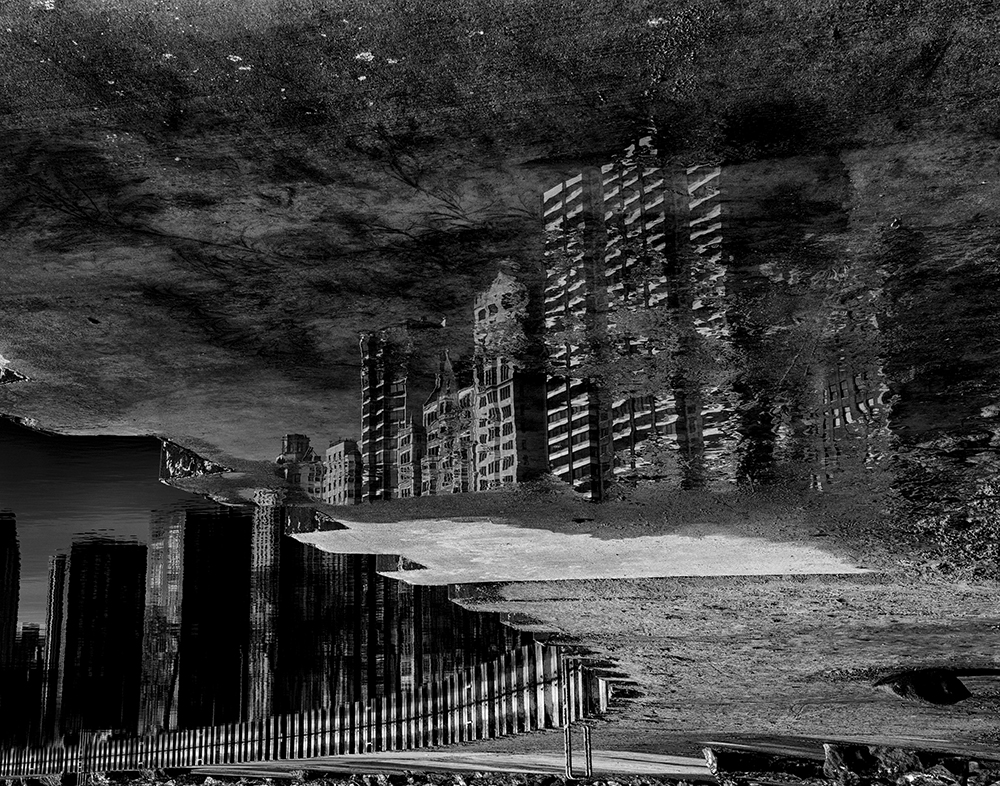
Residential skyscrapers reflected in Lake Michigan and wet concrete lakeside path, Chicago © Steve Geer

